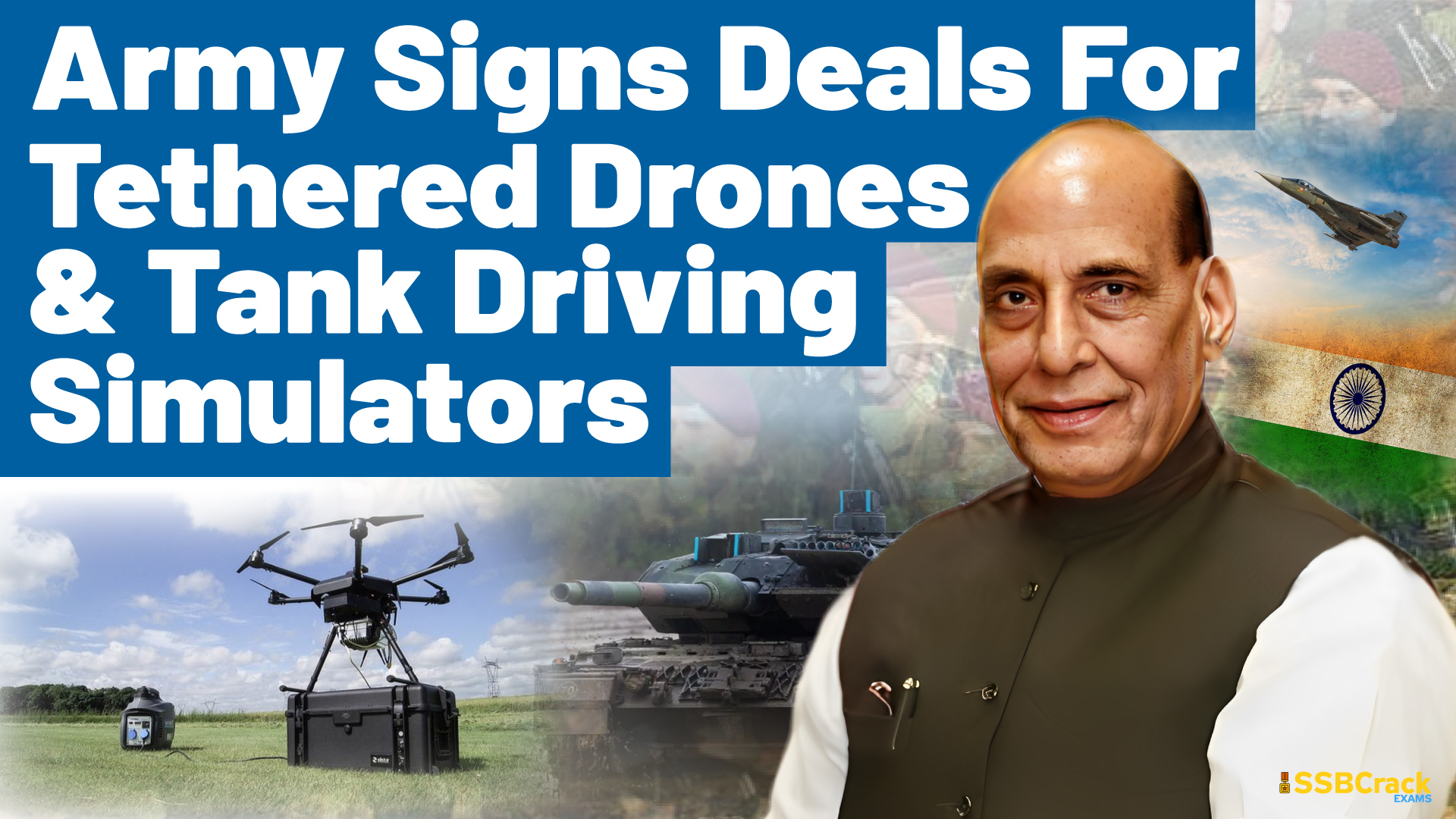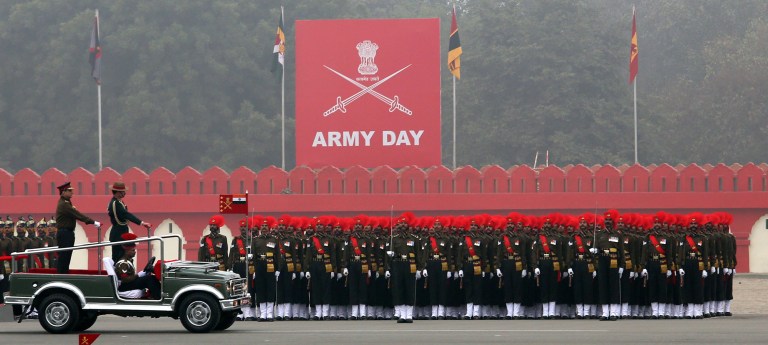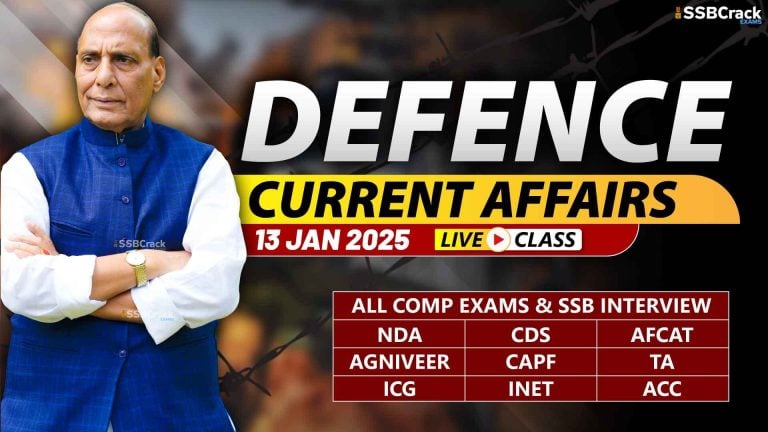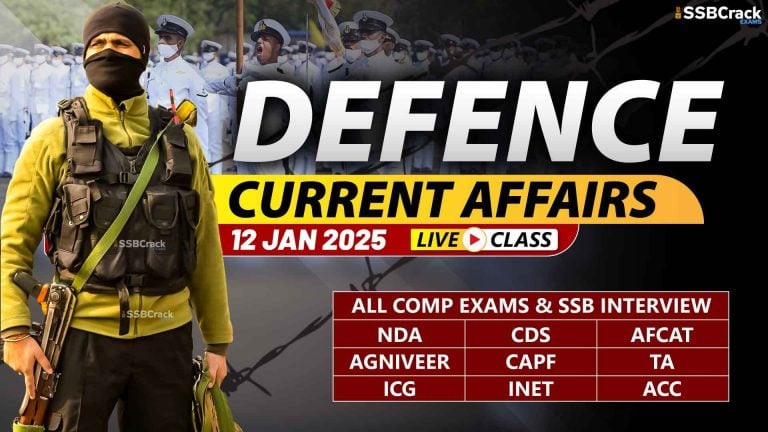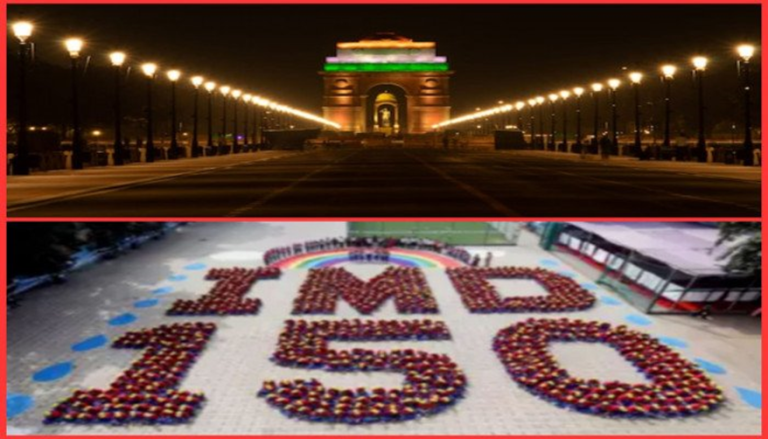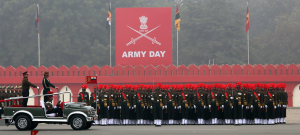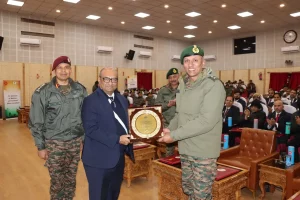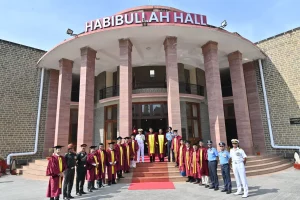Indian Army Tethered Drones and Tank Driving Simulators Deal
- In continuation with its steps to strengthen intelligence and surveillance systems along the LAC, the Indian Army on Monday signed a contract with local manufacturers for the supply of tethered drone systems and tank driving simulators.
- The Indian Army in a message confirmed the signing of a contract for the procurement of 130 tethered drones and 19 tank-driving simulators. “The induction of the new equipment will enhance the overall operational preparedness of the Army,” said the force.
- Contract for the drone system for long-distance surveillance and intelligence gathering along the borders was signed with indigenous company New space Research Technologies Pvt Ltd. The contract for the other equipment was signed with Zen Technologies Limited, which will also involve skill development.
- The Request for Technical and Commercial Proposals for the drones was issued by the armoured branch of the Integrated Headquarters of the Ministry of Defence in January this year, under the fast-track procedure.
- As per the RFI, these systems are sought to fly not less than six hours in tethered mode and around 45 minutes in un-tethered mode.
- These drones are connected to a ground-based tethered system with a flexible wire or cable for power and communications and can provide surveillance of beyond-line-of-sight targets for a prolonged period.
Significance
- Tethered drone systems are ideal for extended surveillance and security overwatch missions such as border control. Traditional drones have a greater range allowing them to perform missions the sensor cannot capture from a distance.
Advantages
- Tethered UAVs are perfect for data capture and telemetry due to the reliability of tethered connections.
- They dramatically reduce technical and human error crashes in flight.
- They provide a secure line of communication between the ground station and the aircraft.
- It also does not require GPS navigation.
- Many tethered drones have longer flight times compared to free-flying, battery-operated drones.
- Due to the restricted movement of a tethered drone, the operator does not need piloting skills and can mainly focus on their tasks.
